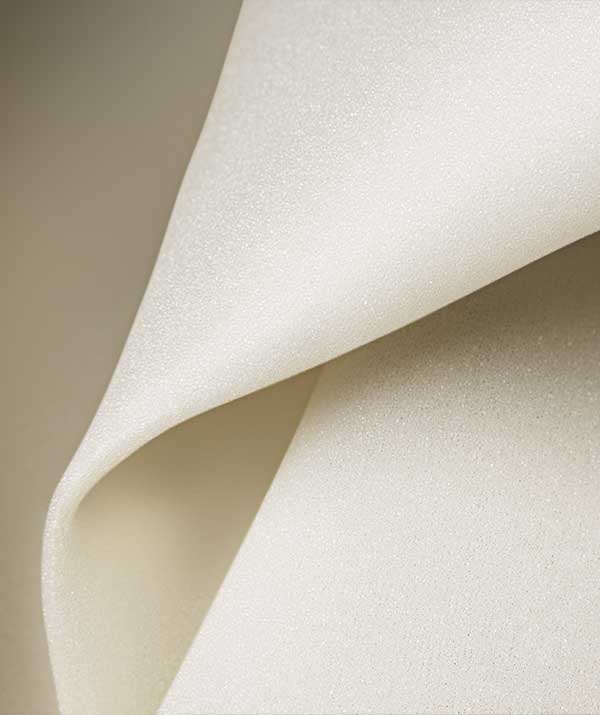PORON

Data sheet
| Density (ASTM D 3574-95 test A) | 15 ± 10% lb/ft3 (0.24 specific gravity) |
| Standard Thickness | See Product Availability |
| Standard Color | 05-Neutral 72-Aquamarine |
| Air Permeability (Gurley Densometer) | Open Cell Breathable |
| Compression Set (ASTM D 3574 Test D@ 158°F) | 10 % max |
| Compression Force Deflection (0.2/min. Strain Rate Force Measured @ 25% Deflection) | 27-75 kPa |
| Hardness, Durometer (Shore “O”) | 12 |
| Hydrolysis Resistance (ASTM D 3574 Test J / Test D after autoclaved 5 hrs @ 250°F) | Good Resistance, 5%max |
| Resilience (ASTM D 2632-96, Vertical Rebound) | 24 avg |
| Water Vapor Transfer (Based on ASTM E 96-00) | >200 g/m2/24hrs |
| Water Absorption (Based on ASTM D 570) | <20 % Wt Gain |
| Antimicrobial (ASTM G21) | Does not promote fungal growth Pass |
| Skin Contact (Primary Skin Irritation – FHSA USP Class VI Toxicology) | pass |
| Tear Strength (ASTM D 624 Die C) | 0.5 (kN/m) |
| Tensile Elongation (ASTM D 3574 Test E) | 100 %min |
| Tensile Strength (ASTM D 3574 Test E) | 276 kPa |
| Temperature Resistance – Recommended Constant Use(ASTM D 746-98) | 90° max |
| Temperature Resistance – Recommended Intermittent Use(ASTM D 746-98) | 121° max |
| Staining (ASTM D 925-88) | no stain |
| Chemical Resistance | PORON Urethanes are unaffected by mild organic acids and bases. They show modest swelling with oils and greases and other linear hydrocarbons. Strongly polar solvents will greatly swell PORON Urethanes. In most cases, physical properties recover to a great extent as the solvents evaporate. |
| Additional Solvent Resistance 8Soap and Water 50/50) | No tackiness or surface deterioration |
| Density (ASTM D 3574-95 test A) | 20 ± 10% lb/ft3 (0.32 specific gravity) |
| Standard Thickness | See Product Availability |
| Standard Color | 40-Beige 14-Light Blue |
| Air Permeability (Gurley Densometer) | Open Cell Breathable |
| Compression Set (ASTM D 3574 Test D@ 158°F) | 10 % max |
| Compression Force Deflection (0.2/min. Strain Rate Force Measured @ 25% Deflection) | 41-97 kPa |
| Hardness, Durometer (Shore “O”) | 17 |
| Hydrolysis Resistance (ASTM D 3574 Test J / Test D after autoclaved 5 hrs @ 250°F) | Good Resistance, 5%max |
| Resilience (ASTM D 2632-96, Vertical Rebound) | 25 avg |
| Water Vapor Transfer (Based on ASTM E 96-00) | >200 g/m2/24hrs |
| Water Absorption (Based on ASTM D 570) | <20 % Wt Gain |
| Antimicrobial (ASTM G21) | Does not promote fungal growth Pass |
| Skin Contact (Primary Skin Irritation – FHSA USP Class VI Toxicology) | pass |
| Tear Strength (ASTM D 624 Die C) | 0.9 (kN/m) |
| Tensile Elongation (ASTM D 3574 Test E) | 100 %min |
| Tensile Strength (ASTM D 3574 Test E) | 517 kPa |
| Temperature Resistance – Recommended Constant Use(ASTM D 746-98) | 90° max |
| Temperature Resistance – Recommended Intermittent Use(ASTM D 746-98) | 121° max |
| Staining (ASTM D 925-88) | no stain |
| Chemical Resistance | PORON Urethanes are unaffected by mild organic acids and bases. They show modest swelling with oils and greases and other linear hydrocarbons. Strongly polar solvents will greatly swell PORON Urethanes. In most cases, physical properties recover to a great extent as the solvents evaporate. |
| Additional Solvent Resistance 8Soap and Water 50/50) | No tackiness or surface deterioration |
